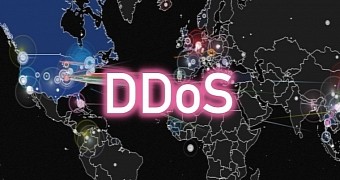Everyone knows DDoS attacks can be quite annoying and disruptive, but they're also particularly expensive, it seems, costing organizations on average more than $2.5 million in revenue.
According to the fourth annual Worldwide DDoS Attacks and Cyber Insights Research Report from Neustar, a neutral provider of real-time information services, DDoS attacks can be extremely costly for companies.
"Distributed Denial of Service (DDoS) attacks are the zeitgeist of today's Internet. The question organizations must ask now is how they are prepared to manage these highly disruptive events. Are they prepared for the bad day where their customers call and ask why the website is down?" said Barrett Lyon, Head of Research and Development at Neustar Security Solutions.
The report brings forth some interesting details. On the one hand, volumetric DDoS attacks are getting larger. Nearly half of all attacks were more than 10 gigabits per second, while 15 percent of attacks reached at least 50 Gbps, which is almost double than the numbers reported last year.
Furthermore, 849 out of 1,010 organizations that were interviewed had been attacked, indicating hackers aren't necessarily targeting any specific industry anymore, as they did in the past. Of course, with DDoS attacks for hire available on the dark web, it's pretty normal that they're now more widespread and covering all types of companies.
The high cost of dealing with DDoS
As mentioned, such attacks are also costly. 43 percent of organizations report average revenue loss of at least $250,000 per hour, with more than half admitting that it took at least three hours to detect the attack in the first place. Another 40 percent said it took at least three hours to also respond.
Since ransomware is becoming such a widespread tool, it should be noted that they're also popping up a lot more often in concert with DDoS attacks. In fact, there's been a 53 percent increase since 2016, with 51 percent of attacks involving some sort of loss or theft.

 14 DAY TRIAL //
14 DAY TRIAL //